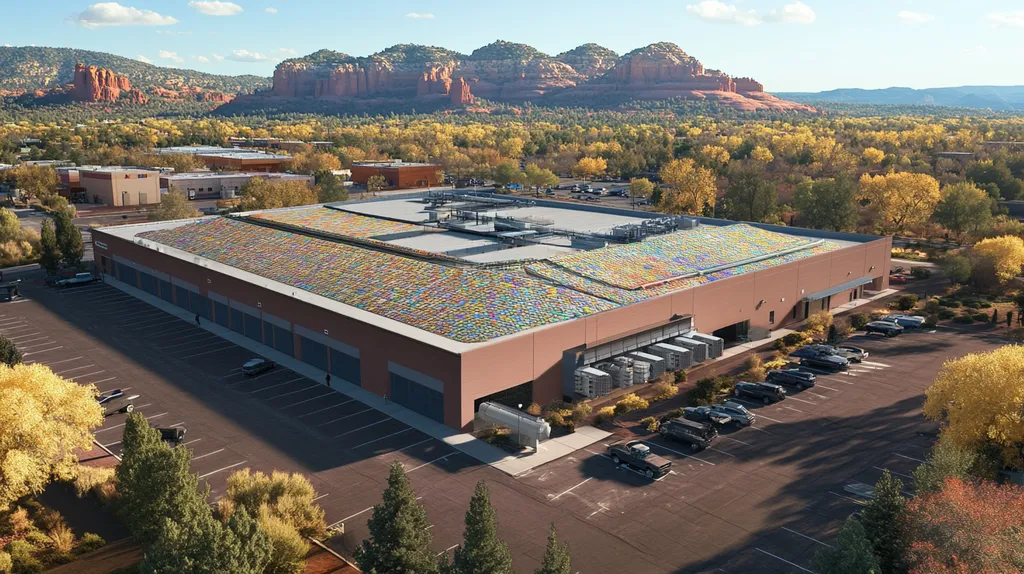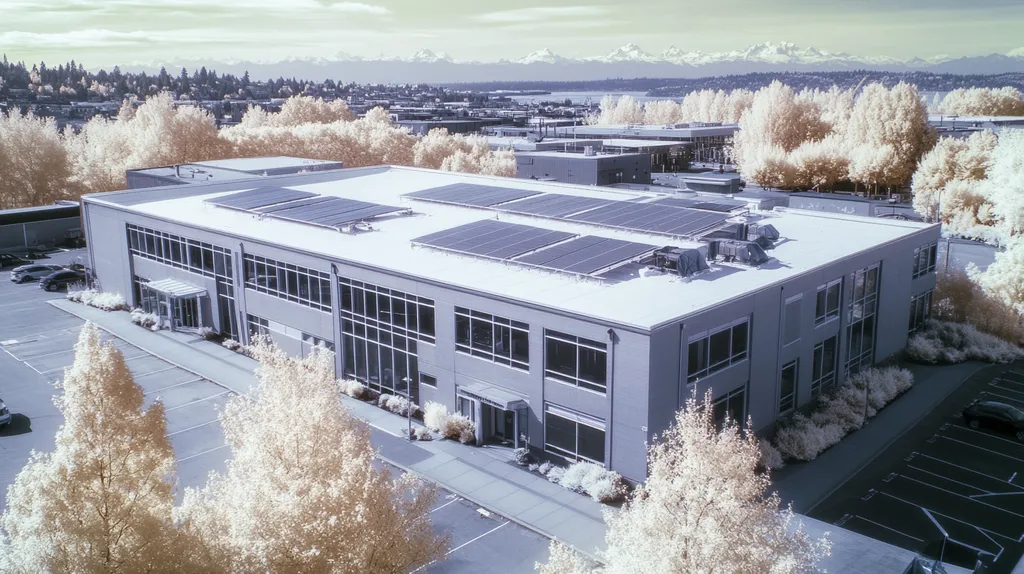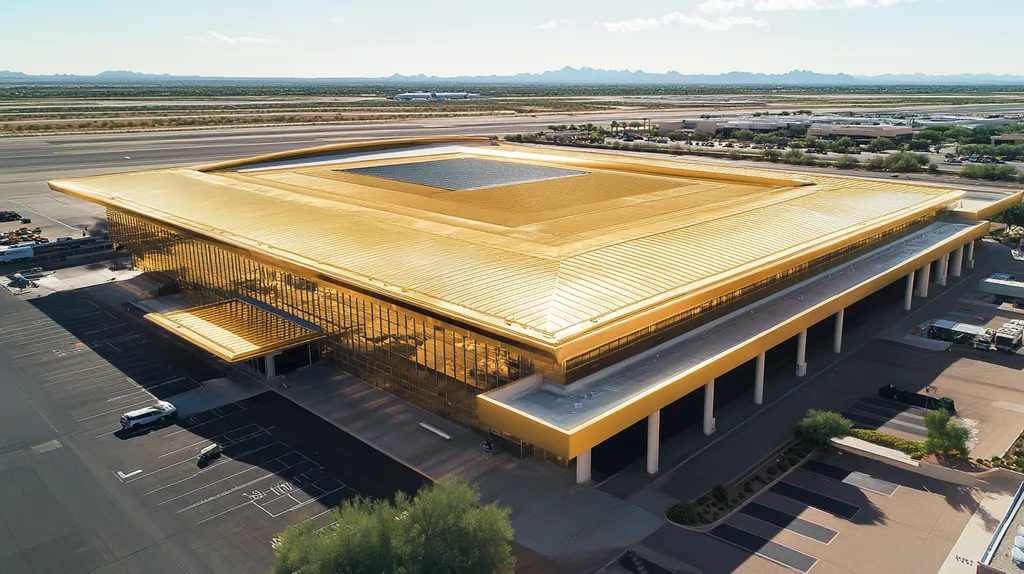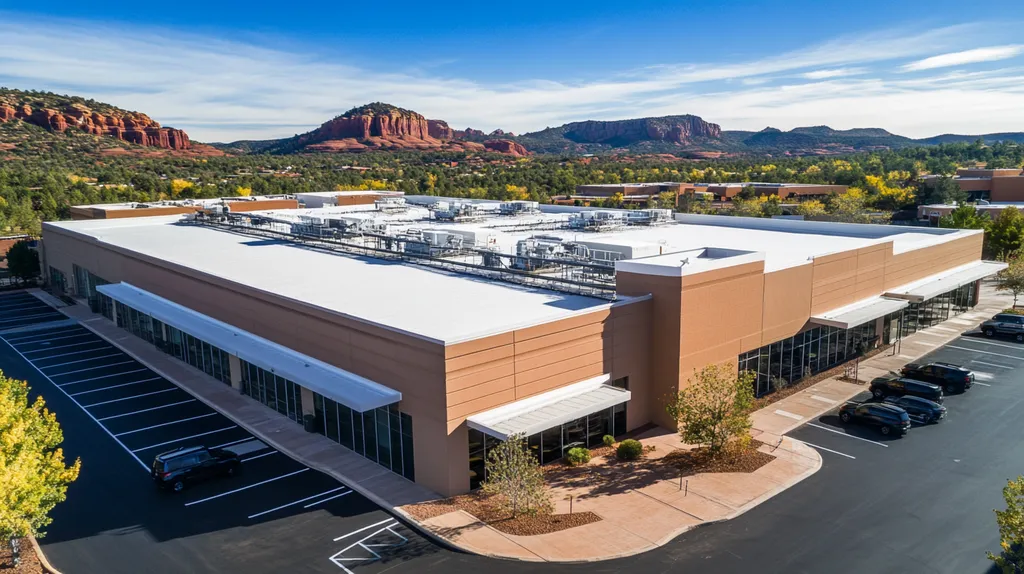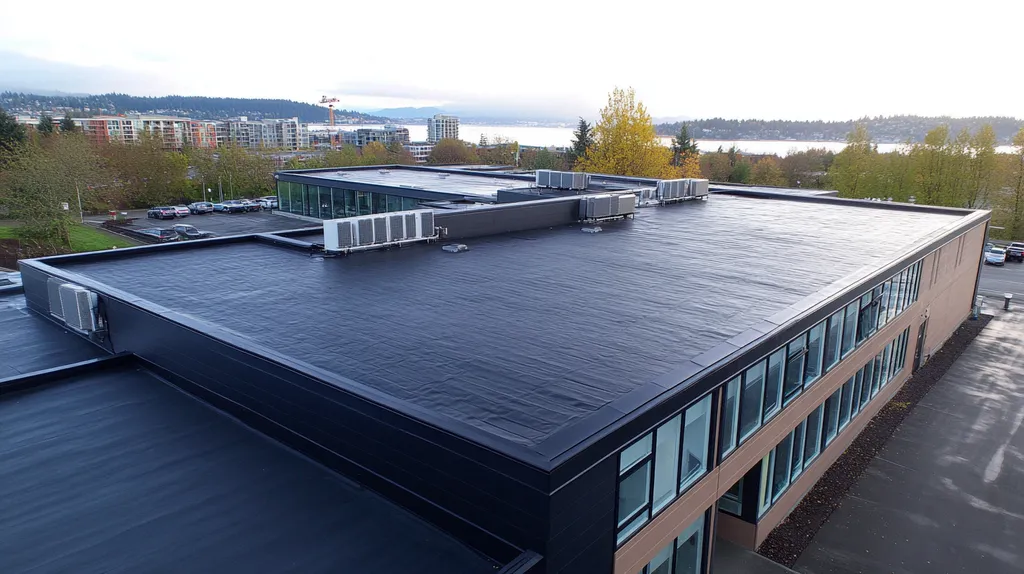Welcome to today’s Battle Royale featuring two roofing heavyweights: “Polyurethane” in the east corner versus “Acrylic Coatings” in the west!
Tonight’s showdown pits these contenders against each other across six punishing rounds designed to test every aspect of their performance for Commercial Roof Coating.
At stake? Millions in potential costs, decades of building protection, and the critical performance demands of modern commercial and industrial facilities.
Our professional judging panel will evaluate each round on technical merit, real-world performance, and value delivery. After all six rounds, we’ll declare our ultimate champion.
Ladies and gentlemen, facility managers and building owners… it’s time to rumble!
ROUND 1: INITIAL COSTS & INSTALLATION
When selecting commercial roof coatings, property owners face a critical decision that impacts both immediate expenses and long-term building protection. The wrong choice can lead to premature coating failure, increased maintenance costs, and potential structural damage. Understanding the nuances between polyurethane and acrylic coatings – from initial material costs to installation requirements – is essential for making an informed investment.
Material Expenses
Material costs represent a significant portion of any commercial roofing project’s budget. Polyurethane coatings command premium pricing, often 30-50% higher than acrylic alternatives, due to their advanced chemical composition and enhanced durability features.
Acrylic coatings offer an attractive entry point for budget-conscious property owners. Their lower initial cost makes them particularly appealing for buildings with shorter anticipated ownership periods or those facing immediate budget constraints.
However, the true cost comparison must consider coverage rates and material thickness requirements. Polyurethane coatings typically require fewer millimeters of thickness to achieve optimal performance, potentially reducing the total volume of material needed.
Premium-grade polyurethane coatings demonstrate superior longevity and durability compared to standard acrylic options. (source: Eagle Roofing)
For material expenses, polyurethane holds the ADVANTAGE due to superior long-term value despite higher upfront costs.
Installation Complexity
Installation complexity directly impacts labor costs and project success rates. Polyurethane coatings require precise environmental conditions and specialized application equipment, demanding experienced contractors with specific expertise.
Temperature and humidity must be carefully monitored during polyurethane installation, as these factors can significantly affect curing times and adhesion quality. This complexity increases both the skill requirements and potential for installation delays.
Acrylic coatings offer more forgiving application parameters and can be installed using standard spraying or rolling equipment. Their water-based formulation allows for simpler cleanup and fewer special handling requirements.
While easier to apply, acrylic coatings still demand proper surface preparation and application technique to achieve optimal performance. Both coating types require professional installation for warranty compliance.
Installation complexity results in a TIE, as success depends more on contractor expertise than inherent material characteristics.
Project Timeline
Project duration affects both direct costs and business disruption. Polyurethane installations typically require longer curing periods between coats, extending overall project timelines by 25-50% compared to acrylic applications.
Weather sensitivity further impacts polyurethane installation schedules, as application must occur within specific temperature and humidity ranges. This can lead to unexpected delays and extended project timelines.
Acrylic coatings offer faster application and curing times, often allowing multiple coats to be applied in a single day. Their water-based formula enables quicker drying, particularly in warm conditions.
The faster installation timeline of acrylic coatings reduces labor costs and minimizes business disruption. This advantage is particularly valuable for facilities that cannot afford extended downtime.
For project timeline considerations, acrylic coatings hold the clear ADVANTAGE.
ROUND 1 WINNER: Polyurethane
ROUND 2: DURABILITY & LIFESPAN
When evaluating commercial roof coatings, durability and lifespan directly impact long-term facility protection and return on investment. The wrong choice can lead to premature degradation, frequent repairs, and costly early replacement. Understanding how different coatings perform under real-world conditions is crucial for making sound investment decisions that protect both the building and bottom line.
Weather Resistance
Weather resistance determines how well a coating maintains its protective properties when exposed to UV radiation, temperature extremes, and precipitation. Polyurethane coatings excel in this area, demonstrating superior resistance to UV degradation and maintaining flexibility through thermal cycling.
The chemical structure of polyurethane creates strong molecular bonds that resist breakdown from environmental exposure. This results in better color retention and reduced chalking compared to other coating options.
Acrylic coatings provide adequate UV protection initially but can become brittle over time when exposed to temperature fluctuations. Their water-based chemistry makes them more susceptible to moisture-related deterioration, particularly in areas with frequent precipitation.
For weather resistance, polyurethane holds the clear ADVANTAGE.
Physical Durability
Physical durability encompasses resistance to impacts, abrasion, and foot traffic during maintenance activities. Premium coatings like polyurethane demonstrate exceptional durability and provide longer service lives than other coating types. (source: American WeatherStar)
Polyurethane coatings form a tough, resilient surface that maintains its protective properties even under regular maintenance traffic. Their superior tensile strength and tear resistance help prevent damage from typical rooftop activities.
Acrylic coatings show lower resistance to physical wear and may require more frequent touch-ups in high-traffic areas. Their softer composition makes them more susceptible to scratching and scuffing from maintenance activities.
For physical durability, polyurethane claims the ADVANTAGE.
Maintenance Requirements
Maintenance requirements directly affect the total cost of ownership and long-term performance. Polyurethane coatings typically need less frequent maintenance due to their superior physical properties and environmental resistance.
Regular inspections and basic cleaning are usually sufficient to maintain polyurethane coating performance. Their resistance to dirt pickup and biological growth reduces the need for intensive maintenance procedures.
Acrylic coatings demand more frequent inspection and maintenance to ensure continued protection. Their greater susceptibility to environmental damage and physical wear often necessitates more regular recoating to maintain adequate protection.
For maintenance requirements, polyurethane demonstrates the ADVANTAGE.
ROUND 2 WINNER: Polyurethane
ROUND 3: PERFORMANCE FACTORS
Performance factors can make or break a commercial roofing investment, directly impacting building protection and operational costs. Poor coating performance leads to premature failure, increased maintenance expenses, and potential damage to underlying systems. Understanding how polyurethane and acrylic coatings perform across key metrics helps property owners make decisions that protect their investment for years to come.
Durability
Durability determines how well a coating withstands physical stress and maintains its protective properties over time. Polyurethane coatings offer exceptional resistance to impacts, abrasion, and chemical exposure, making them ideal for high-traffic commercial roofs.
These coatings maintain their physical properties even under harsh conditions, resisting tears and punctures that could compromise roof integrity. Premium coatings like polyurethane demonstrate superior durability and provide longer service lives than other coating types. (source: American WeatherStar)
Acrylic coatings, while adequate for basic protection, show less resistance to physical wear and mechanical stress. Their softer composition makes them more vulnerable to damage from maintenance traffic and equipment placement.
For durability considerations, polyurethane holds the ADVANTAGE.
Weather Resistance
Weather resistance impacts how effectively coatings protect against UV radiation, precipitation, and temperature fluctuations. Polyurethane coatings excel in extreme weather conditions, maintaining flexibility and adhesion through repeated thermal cycling.
Their molecular structure resists degradation from UV exposure and provides excellent waterproofing capabilities. This resistance helps prevent common issues like chalking, cracking, and delamination.
Acrylic coatings provide good initial weather protection but can become brittle with age and temperature fluctuations. Their water-based formulation makes them more susceptible to damage from ponding water and freeze-thaw cycles.
For weather resistance, polyurethane claims the ADVANTAGE.
Energy Efficiency
Energy efficiency directly affects building operating costs and environmental impact. Acrylic coatings typically achieve higher solar reflectance values, helping reduce cooling loads and energy consumption during hot weather.
Their bright white finish maintains better reflectivity over time compared to other coating types. This characteristic makes them particularly valuable in warm climates where cooling costs dominate energy expenses.
Polyurethane coatings offer good insulation properties but generally don’t match the reflective performance of acrylics. Their darker initial color and tendency to yellow slightly over time can reduce their energy-saving potential.
For energy efficiency, acrylic coatings demonstrate the ADVANTAGE.
ROUND 3 WINNER: POLYURETHANE
ROUND 4: MAINTENANCE REQUIREMENTS
Maintenance requirements can make or break a commercial roof coating investment. Poor maintenance practices lead to premature coating failure, reduced performance, and costly repairs or replacements. Understanding the distinct maintenance needs of polyurethane and acrylic coatings helps property owners implement effective care programs that maximize coating lifespan and protect their investment.
Routine Inspection Requirements
Regular inspections form the foundation of effective coating maintenance. Polyurethane coatings demand thorough biannual inspections, with particular attention to high-traffic areas and mechanical equipment zones where physical damage is most likely.
These inspections must evaluate coating adhesion, check for surface deterioration, and identify any punctures or tears. Early detection of issues prevents minor damage from escalating into system-wide failures.
Acrylic coatings typically require less frequent inspections, often performing well with annual evaluations. Their simpler chemistry makes visual assessments more straightforward, allowing maintenance teams to quickly identify potential problems.
For inspection requirements, acrylic coatings hold the ADVANTAGE.
Cleaning Protocols
Maintaining coating cleanliness directly impacts performance longevity. Polyurethane coatings demonstrate excellent dirt resistance but require specific cleaning agents and techniques to avoid damaging their protective properties.
The chemical sensitivity of polyurethane means maintenance crews must follow strict cleaning protocols. Using incorrect cleaning solutions can degrade the coating surface and compromise its protective capabilities.
Acrylic coatings tolerate a wider range of cleaning methods and solutions. Their water-based chemistry allows for simpler maintenance procedures using standard commercial cleaning products.
For cleaning protocols, acrylic coatings claim the ADVANTAGE.
Repair Procedures
The complexity and frequency of repairs significantly impact maintenance costs. Polyurethane coatings, while more damage-resistant, require specialized repair materials and techniques when damage does occur.
Repairs to polyurethane systems must be performed under specific environmental conditions and often need extended cure times. This complexity increases both the cost and duration of maintenance operations.
Acrylic coatings offer simpler repair procedures with faster cure times and less stringent application requirements. Their compatibility with various repair materials provides maintenance teams with greater flexibility in addressing damage.
For repair procedures, acrylic coatings demonstrate the ADVANTAGE.
ROUND 4 WINNER: Acrylic Coatings
ROUND 5: SUSTAINABILITY CREDENTIALS
As environmental regulations tighten and energy costs soar, sustainability credentials have become a critical factor in commercial roofing decisions. Poor coating choices can result in excessive energy consumption, increased carbon emissions, and potential regulatory non-compliance. Understanding how polyurethane and acrylic coatings perform across key sustainability metrics helps property owners make environmentally responsible choices while maintaining financial prudence.
Environmental Impact
Environmental impact assessment considers the full lifecycle effects of roofing materials on ecosystems and air quality. Polyurethane coatings contain higher levels of volatile organic compounds (VOCs) and require more energy-intensive manufacturing processes, resulting in a larger initial carbon footprint.
However, polyurethane’s superior durability means fewer replacements over time, reducing long-term waste and environmental impact. Their excellent chemical resistance also prevents harmful substances from leaching into the environment during their service life.
Acrylic coatings offer significantly lower VOC emissions and utilize water-based formulations that reduce manufacturing environmental impact. Their simpler chemistry and production methods result in fewer harmful byproducts.
For environmental impact considerations, acrylic coatings claim the ADVANTAGE.
Energy Performance
Energy performance directly affects building operating costs and carbon emissions. Polyurethane coatings provide good thermal resistance but typically offer lower solar reflectance values compared to lighter-colored alternatives.
Their darker initial appearance and tendency to yellow over time can reduce their ability to reflect solar radiation. This characteristic may lead to increased cooling loads in warmer climates.
Acrylic coatings excel in solar reflectance, maintaining their bright white finish and reflective properties longer. This superior reflectivity translates to reduced cooling costs and lower energy consumption throughout the coating’s lifespan.
For energy performance, acrylic coatings demonstrate the ADVANTAGE.
Material Sustainability
Material sustainability encompasses recyclability, renewable content, and production efficiency. Polyurethane coatings typically contain petroleum-based components that are difficult to recycle and derive from non-renewable resources.
Their complex chemical structure makes recycling challenging, often requiring specialized processes. However, their extended service life helps offset these limitations by reducing replacement frequency.
Acrylic coatings incorporate more renewable materials and offer easier recycling options. Their water-based formulation allows for simpler disposal procedures and lower environmental impact at end-of-life.
For material sustainability, acrylic coatings hold the ADVANTAGE.
ROUND 5 WINNER: ACRYLIC COATINGS
ROUND 6: SPECIALIZED APPLICATIONS
Specialized roofing applications demand precise coating selection, with over 40% of premature failures occurring in facilities with unique environmental challenges. From food processing plants requiring strict sanitation to industrial facilities facing chemical exposure, choosing the wrong coating can lead to catastrophic failures and expensive remediation. Understanding how polyurethane and acrylic coatings perform under specific conditions is crucial for protecting both the facility and its operations.
Chemical Resistance Requirements
Industrial environments often expose roof coatings to harsh chemicals, oils, and solvents that can rapidly degrade protective properties. Polyurethane coatings demonstrate exceptional resistance to chemical exposure, maintaining their structural integrity even when subjected to industrial pollutants and chemical spills.
Their molecular structure creates a highly resistant barrier that prevents chemical penetration and subsequent degradation. This resistance makes polyurethane particularly valuable for manufacturing facilities and chemical processing plants.
Acrylic coatings offer limited chemical resistance and can break down when exposed to industrial solvents or petroleum products. Their water-based chemistry makes them vulnerable to chemical attack, potentially leading to coating failure in industrial settings.
For chemical resistance requirements, polyurethane holds the ADVANTAGE.
High-Temperature Applications
Facilities with elevated roof temperatures from equipment or processing operations require coatings that maintain stability under thermal stress. Polyurethane coatings retain their physical properties at temperatures exceeding 180°F, making them ideal for areas near HVAC equipment or industrial exhaust systems.
These coatings resist softening and degradation even under prolonged heat exposure. Their thermal stability prevents deformation and maintains protective capabilities in high-temperature zones.
Acrylic coatings become unstable at elevated temperatures, potentially softening or developing adhesion issues. Their temperature limitations restrict their use in areas experiencing significant heat exposure.
For high-temperature applications, polyurethane demonstrates the ADVANTAGE.
Cold Storage Facilities
Cold storage and freezer facilities present unique challenges with extreme temperature differentials and constant thermal cycling. Polyurethane coatings maintain flexibility at low temperatures and resist cracking during thermal transitions.
Their superior elongation properties allow them to accommodate substrate movement caused by thermal expansion and contraction. This flexibility prevents coating failures common in cold storage applications.
Acrylic coatings become brittle at low temperatures and may crack under thermal cycling conditions. Their reduced flexibility in cold environments makes them less suitable for refrigerated facilities.
For cold storage facilities, polyurethane claims the ADVANTAGE.
ROUND 6 WINNER: POLYURETHANE
AND THE WINNER IS…
After six grueling rounds of technical evaluation, we have our verdict…
In a decisive 4-2 victory, POLYURETHANE claims the championship belt! This heavyweight defender dominated in durability, weather resistance, and specialized applications, proving its worth through superior chemical resistance and exceptional longevity.
Polyurethane’s knockout performance in Rounds 2, 3, and 6 showcased its unmatched ability to protect against environmental extremes while handling specialized industrial challenges. Its premium-grade toughness and chemical resistance make it the undisputed champion for demanding commercial applications.
But don’t count Acrylic out! This scrappy contender proved its worth in maintenance simplicity and sustainability, making it an excellent choice for properties in moderate climates where budget considerations and environmental impact take center stage.
IMPORTANT NOTICE: While this analysis reflects general performance characteristics, every building presents unique challenges. Local climate conditions, substrate materials, and specific facility requirements can significantly impact coating performance. Property owners should consult qualified roofing professionals for expert evaluation of their specific situation.
Ladies and gentlemen, in the high-stakes world of commercial roofing, victory goes not to the strongest contender alone, but to the solution that best matches your facility’s specific requirements. Choose your champion wisely!
FREQUENTLY ASKED QUESTIONS
Q. What are the cost differences for commercial roof coatings?
A. Polyurethane coatings generally cost 30-50% more than acrylic coatings. However, their advanced durability can lead to lower long-term expenses. For budget-sensitive projects, acrylics are more appealing, but it’s essential to consider performance factors over time.
Q. How long do commercial roof coatings last?
A. Polyurethane coatings generally offer a longer lifespan than acrylic coatings due to enhanced durability. While specific lifespans depend on environmental conditions and maintenance, polyurethane typically outlasts acrylic by several years when properly applied and maintained.
Q. Which commercial roof coating performs better in extreme weather?
A. Polyurethane coatings excel under extreme weather conditions, resisting UV degradation and thermal cycling. Acrylic coatings can become brittle and less effective over time, leading to potential failures in harsh environments.
Q. What are the maintenance needs for commercial roof coatings?
A. Polyurethane coatings typically require less frequent maintenance due to their durability and resistance. In contrast, acrylic coatings demand regular inspections and cleaning to maintain performance, often resulting in higher long-term maintenance costs.
Q. How do commercial roof coatings impact energy efficiency?
A. Acrylic coatings typically achieve better solar reflectance, which can reduce cooling costs in warm climates. While polyurethane provides good insulation, it often has lower reflectivity, potentially resulting in elevated energy usage over time.
Q. Can commercial roof coatings handle specialized applications?
A. Polyurethane coatings offer superior chemical and high-temperature resistance, making them ideal for specialized environments like manufacturing plants. Acrylics are less robust in these settings, often leading to premature failures and necessary replacements.
Q. What are the environmental impacts of commercial roof coatings?
A. Acrylic coatings generally have lower VOC emissions and a smaller carbon footprint compared to polyurethane. However, polyurethane’s longevity may offset its initial environmental impact by reducing the frequency of replacements over time.

